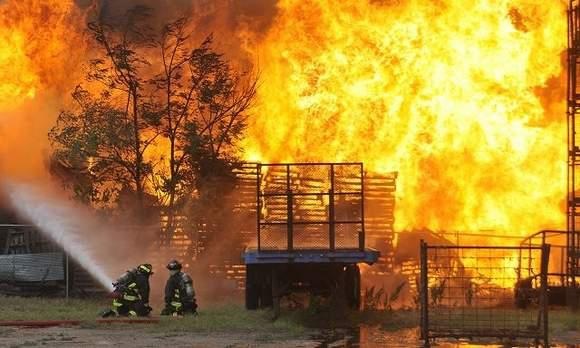
The Difference Between a Fire Department and a Fire District. Understanding the structure of the fire department or fire district you are applying for is very important. I have been a chief officer for both a fire district and a fire department. I will help you understand why it’s important for you to know the difference and what is the best fit for you as an new firefighter.
During the application process you will commonly see departments identified as Fire Departments or Fire Districts. I have often been asked what’s the differences between a Fire Department and A Fire District? A fire department is typically tied to a city and the boundaries of that city. The city fire department is funded by the taxes collected by that city. A Fire District is typically tied to several communities and unincorporated areas outside of these communities and is funded by property taxes from the area they serve.
Why do Districts Exist?
There are several factors that will influence the development of a fire district, however, typically the main driving factor is to bring smaller communities and unincorporated areas together under one fire service provider. This helps to provide better service to all the area while reducing redundancy in service and costs associated with this redundancy.
The next question you might ask is how can there be a redundancy in fire protection coverage? Every community needs fire trucks right? This is true however, often times small neighboring communities will have stations very close together because of the size of these communities. Each of these communities will have several types of fire apparatus as well to service each community. This close proximity and large number of apparatus causes an overlap in coverage based on time and distance. Stations staffing and apparatus are a big cost to each community. Having the ability to share these resources while providing better area coverage makes fire districts very effective.
An example of this is Northern Minnesota where several smaller townships outside of Duluth all have fire stations, they refer to them as fire halls, will several fire trucks within very close proximity of each other. Each fire hall in each community has 1 to 3 fire engines and often a ladder, water, brush, and rescue truck. Now with the development of Cloquet Area Fire District, 5 communities and unincorporated area in two counties have service provided by one fire district. This reduced the number of fire apparatus while providing all the communities with 24/7 career fire protection. As a huge bonus, Cloquet Area Fire District also provides advanced life support ambulance service to all the communities they serve.
Another example is in Northern Colorado. Mountain View Fire Protection District covers over 2 hundred square miles and 4 communities. Mountain View covers the communities, of Dacono, Erie, Mead, Niwot, and a large area of unincorporated land with 6 stations. This helps to provide better service to smaller communities that simply do not have that tax base to support a full-time career fire department. It also provides service to unincorporated county areas that do not have structured government over site and budgets like a typical city of township would.
Are Districts Structured Different from Departments?
The structure is pretty typical to a city department. However, due to the need to often coverage large areas that have little or know fire hydrant system you will find apparatus to move water, often referred to as Tanker or Tender trucks. You will also often find smaller fire trucks, call brush trucks to respond more effectively to grass and wild land fires.
The big difference is how they are govern and funded. A city fire department is governed by the city manager and city council. The fire department is funded by the same revenue sources that the entire city is funded by. Typically sales taxes. These funds are shared by all departments within the city.
A fire district is governed by a fire board. This board is typically 5 to 7 people. The people on the fire board are usually a representative from each community within the district. A fire district is typically funded by property taxes from the communities with in their response area.
Fire districts often have more flexibility in managing their budget. their budget is also often much more predictable and stable. Property taxes typically do not see big increases and decrease over time. A city budget however, can have large swings in budget, both from predicted and unpredicted economic impacts. This can, at times, have a big impact on a fire department operating budgets.
An example of this was during the COVID pandemic. City fire departments saw big challenges due to nearly non existent sales tax revenue felt by the city they provide service for. During that same period of time fire districts that were funded by proper taxes, often referred to as Mill Levy’s, saw very little impact during the same time period.
Which is better to work for?
Which is better to work for? I get this question often and it’s really not an easy one to answer. In my experience, in general, city fire departments pay better and are more diverse in the types and level of service they provide. City departments are also often busier than fire districts and meet more acceptable staffing requirements.
Some of the challenges are that to get hired on city departments can be more competitive. They may also require you to live within the city the department serves. They often have higher entry level requirements as well. This could include education requirements and being an Emergency Medical Technician, (EMT), or Paramedic. So may look at these as a disadvantages.
Fire districts often pay less and may have lower entry level requirements. They also may have lower staffing requirements. What I mean by staffing requirements is typically, through national standards, a city department will have 3 to 4 firefighters on each fire truck where in a fire district it is not uncommon to find staffing lower than this. This could be viewed as a safety issue and some are uncomfortable working under these conditions.
District often appeal to people that would rather serve more rural communities and often are not as tough to get a firefighter position.
Know the Department / District You are Applying for.
First and foremost, please understand this information is based on my experience and general research information for many departments and districts. There are exceptions to all types of departments and districts. Some districts are very busy and pay extremely well, where some city departments struggle with budgets and staffing on a regular bases.
It is very important for you as the fire candidate to research to fire district or department you are applying for to make sure its a good fit for you and your family. Making a decision on what works best for you should not be a generalized decision on whether you are applying for a fire department or fire district. It needs to be based on your research of the department or district and the community. Make an educated decision before you even apply.
Good luck to you in your fire service pursuit.



